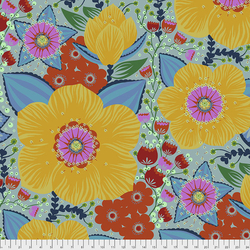Anna Maria Horner | |
|---|---|
| Born | 1972 (age 52–53) [1] |
| Alma mater | University of Tennessee |
| Known for | artist, author, fabric designer |
| Website | annamariahorner |
Anna Maria Parry (born 1972) is an artist, author and fabric designer in Nashville, Tennessee, known for her colorful fabric designs, quilts, and sewing patterns. [2] [3] In addition to teaching classes and selling items globally under her namesake brand, [4] she has written several books about sewing, quilting, and needlework. Horner has appeared on The Martha Stewart Show [5] and been featured in Better Homes and Gardens . [6] In May 2015 she opened Craft South, a craft store and studio in Nashville. [7]
Contents
Horner comes from a family of artists, including painters, weavers, and knitters, and learned to sew as a child. [8] She later attended the University of Tennessee, where she earned a fine arts degree in drawing and was introduced to patchwork quilting. [4] [3] Horner founded a clothing and housewares boutique called Handmaiden in 1995. [8] She continued to designed clothes, paint and quilt. In 2001, Horner began work on her personal brand Anna Maria. [8]
